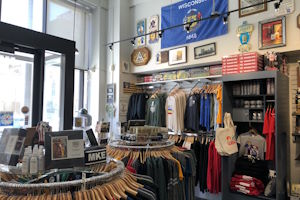2007-11 Vital Source Mag – November 2007
We’ve got to help Alan Keyes
Typically I don’t read every political email I receive anymore than I pore over my spam, but sometimes a subject line catches my attention. Recently, Alan Keyes was excluded from a Fox News-sponsored Florida GOP debate on the premise that he didn’t have the required 1% straw poll vote, even though the Iowa Poll allegedly had him at 2% just a week after he entered the race. Turns out, none of the polls used by the Florida GOP included Keyes’ name. Granted, they may have been taken before he declared his candidacy, but he’s in the race now and everybody knows it, even if his only true role ends up being to keep arch-conservative Christian issues in the debate. Keyes’ people sounded off, launching an email campaign to barrage Florida GOP chair Jim Greer with complaints. This morning I received another email from the Keyes campaign. He was recently excluded from the Family Research Council’s Values Voter Summit, reportedly because he entered the race too late to be included. His staff, however, cites that attendee Fred Thompson entered the race barely a week before Keyes. Most top tier candidates were there – unlike the Values Voter Debate held in September, where Keyes came in just behind Ron Paul and Mike Huckabee in a field absent Giuliani, Thompson and McCain. Keyes’ camp acknowledges that political event organizers have the right to invite (or not) anyone they choose, but that groups like the FRC are lying when they claim to invite ALL candidates. In the run-up, Keyes, clearly a candidate, didn’t get his invitation in the mail and when his camp called to see if it was lost, they were told that he simply wasn’t asked to participate. It seems a little sad to picture them all sitting around the office waiting for the mail and then calling the FRC, only to learn that they weren’t invited. I imagine their initial incredulity, followed by quickly rising ire and a subsequent email blast bitch-slapping the FRC, perhaps fired off in anger in the middle of the night. At the end of the day, I don’t really care about Alan Keyes’ candidacy. And it amuses me that I know so much about his campaign through official emails that dish dirt in that whiny, sanctimonious tone to which my ears have been deaf since I was a teenager tuning out my mom over dirty clothes on the floor. My first response is to tease Keyes for his picked-on demeanor and holier-than-all posturing, but in fact his situation reveals chilling political truths. Prior to the advent of email as the political machine’s communication tool of choice, citizens had to rely on the media to report stories of exclusion, favoritism and other abuses of power in a reportedly inclusive system. In Keyes’ case, there’s little chance his story would have gotten much play – he’s the quintessential fringe candidate. But by his ability to communicate with me directly, I am informed firsthand of ways in which his […]
Nov 1st, 2007 by Jon Anne WillowJimmy Eat World
‘Emo’ was once considered a four-letter word, yet one of the founding bands of this genre, Jimmy Eat World (along with the likes of Rites of Spring, Sunny Day Real Estate and Braid), managed to give it staying power. From 1993 onward, the band that once did split 7” records with Jejune and Christie Front Drive has evolved into a Warped Tour member and is name-checked with Green Day and Taking Back Sunday. Taken aback by their success, the band has been seemingly cornered into re-creating and advancing this once fresh sound, moving it from its hardcore/punk roots into a bubblegum pop vocalists’ headbanger’s ball. In the process, Jimmy Eat World’s trademark sound, which began with 1999’s Clarity, shifted the majority of the vocals from Tom Linton’s scratchy emo-core rasp to Jim Adkins’ more pure tenor choirboy vox. Perhaps this was the switch that fixed Jimmy Eat World’s rising popularity, but at a heavy price. None of the once truly poignant words remain. On Chase This Light, the lyrics seem bled dry of anything heartfelt, the songs sliding from one to the next, not effortlessly, but unnoticeably. Gone are the days of the intense but admirable balance of adrenaline-bomb hooks and dramatic epics with electronic noodling (innovative in its day). This stagnant direction is surprising, since their last release in 2001 had them leaning back to their grittier Static Prevails days. Only “Firefight” and “Feeling Lucky” recall the band’s original sound. Venturing into new territory, “Gotta Be Somebody’s Blues” gives off a smoke-machine, Def Leppard vibe with its excessive strings and over-produced vocals. Even Jim Adkins’ contribution – “Carry You,” from his side project Go Big Casino, and which could be said to be more true-blue – still sounds contrived and will soon be Muzak. Was it foresight that almost ten years ago on Clarity’s “Your New Aesthetic,” Adkins sang, “We’re lowering the standard in a process selective / the formula is too thin / but it takes more than one person / so everyone jump on / I’ll miss you when you’re just like them”?
Nov 1st, 2007 by Erin Wolf

















